I had been talking with my friend Dany Daniel about Casa Parés for over a week. Not only had I never been there, I had never met anybody else who seemed to be aware it existed. I only found out about it when Assumpció Feliu loaded up a 2008 TV3 video clip of it at a the MUHBA (Museu d’Historia de Barcelona) Conference “Emerging Urban Landscapes, The Factory Heritage” in December of 2015. Assumpció Feliu is the vice president of the AMCTAIC (Associaciò del Museu de la Ciència i de la Tècnica i d’Arqueologia Industrial de Catalunya). This is the video clip:
La foneria Casa Parés, 130 anys d’història
After that, I knew I had to visit, and Dany Daniel was not only a friend but also a photographer who could help me document this industrial relic hidden behind brown double doors. I pulled out my BQ Aquaris 4.5 and typed in the address on google maps:
Maestros Casals i Martorell 15, 17. Barcelona 08003
It is two blocks away from my house. I could throw a frisbee down the street and maybe have it land pretty close to the garage door of Casa Parés. I’ve lived here for over a year and never had a clue. I was glad I had Dany Daniel so that he could take picture like these:
José Puerto is not just the owner, he is the living heritage of Casa Parés. He married into the family of the original Jaume Parés who founded Casa Parés in 1875. The story goes that, upon retirement, Jaume Parés left the business to his son (also Jaume Parés) who then left it to his son (again named Jaume Parés) who didn’t have any sons so he left it to his daughter, Maria Mercè Parés, who is José’s wife.
In 2007, the business shut down. City Hall stopped renewing permits for industrial machinery in Barcelona’s City Center. José said that his clients had such a demand that he kept the business open an extra year to give them time to find other suppliers. I asked why City Hall would want to shut down the business, but José was understanding. The metal shaping process was too loud for the neighborhood.
I turned around and saw Dany Daniel walking over towards a strange contraption made up of hundreds of stretched wires, levers, and tiny, felted hammers. It was an upright piano with the front panel removed and all its mechanical guts showing, an odd thing to find in an industrial museum. I asked José if he used to play the piano while shaping metal. No, he just had the piano and thought this was the best place for it. I get that. Dany Daniel was taking a closer look and testing the motion of some of its parts, “Ah, it has strings. So that’s how they tune pianos.”
I met José for the first time at that MUHBA Conference I mentioned earlier. It seems that he wasn´t invited to take part in the panel debates, but that didn´t stop him from raising his hand to participate. I remember there was a discussion about what to do with Can Seixanta, a historic textile factory in the Raval district which is in danger of being torn down. “This is just an idea,” José said to the group of politicians, historians, engineers, activists, and civic groups represented there, “but why not turn Can Seixanta into an industrial museum? And you could also use it to store the Ateneu Encyclopedia.” That’s Jose. He has a way of de-complicating things. He already turned his own business into a museum and he makes it sound easy.
Joan Roca, the director of the MUHBA, was responsible for organizing the conference, and he had prepared a packet of materials for each of the attendees. One of the papers was from an article he had written about Casa Parés in 2008 for the Butlletí d’Arqueologia Industrial i de Museus de Ciència i Tècnica, a quarterly newsletter published by the AMCTAIC. This article explains that a group of interested parties (MUHBA, District of Ciutat Vella, AMCTAIC, with support from the Col.legi of Engineers) were investigating possibilities for musealizing Casa Peres, conserving its heritage and making it visible to the public.
There´s something else in the article: a fear, or maybe just an awareness of a larger force at play in the management of Barcelona’s heritage.
Després d’un període de debat molt intens, la recuperació del patrimoni industrial de Barcelona ha experimentat un avenc notable en els darrers anys. Tanmateix, en el plantejament de com s’ha de tractar, en termes patriomonials, l’empremta del món fabril en el paisatge barceloni no s’ha pogut evitar encara un cert zoning o tematisme territorial, amb una Ciutat Vella on es valorarien especialment els elements d’epoques anteriors a la industrialització, Eixample “burgès i modernista”, uns antics nuclis del Pla amb “masies i elements rurals” i, darrerament, un Poblenou que seria el paradigma de la “ciutat fabril”.
In this opener, Joan Roca immediately frames the Casa Parés project in terms of urban heritage planning. Casa Parés is an opportunity to resist “zoning or territorial thematization” in favor of authentic urban memory. Joan Roca knows his audience; this is a message with a lot of social echo for most Barcelonans. Keywords in this discourse, besides authenticity, are speculation, tourism, and another word, which Joan Roca weaponizes in his final sentence:
Els pòsits monumentals del seu remarcable passat podrien abocar, en termes patrimonials, a un ambient de parc temàtic selectiu si s’esborren completament les empremtes humanes, tècniques i constructies d la seva intensa vida fabril des del set-cents fins ben entrat el segle XX.
Theme park.
The state of the Casa Parés question today is not too good. After a year or so of monthly guided visits, the musealization effort dried up. Maybe it was a management issue. José doesn’t want to sell his place, just rent it, and he wants to be part of what gets done (could be a deal breaker for the involvement of an institution like the MUHBA, I don’t know). Or, maybe the problem was just financial: not enough money or interest.
Or maybe Joan Roca’s fears have been confirmed and the bigger, blurrier forces of heritage “zoning” are to blame. Musealizing 19-20th Century industrial heritage inside the Ciutat Vella (old city) district of Barcelona is swimming against the current.
Thank you for swimming, Jose, Assumpció, and Joan. Because of your efforts, this project blipped onto my radar screen. There´s still a heartbeat here.
As a matter of fact, the 2008 project wasn’t the only one proposed. José tells me that, years ago, Eusebi Casanelles i Rahola showed up from the Museu Nacional de Ciencia I Tecnica (MNACTEC) looking to acquire industrial heritage for the museum in Terrassa. The metal flattener was too big apparently, but he was interested in some smaller machines. But José said no, the machines were part of the workshop, and he would have to take it all or take nothing.
Really, hats off to José for sticking to his principles. Look at those carbon stained walls. The lighting in here has to be described as dramatic. The smell is another thing. Do you know what melted tin smells like? I do. And when Dany Daniel and I were in awe of the size of the metal flattener machine, José leaned over and flicked the power switch. This is a machine made in the 1800’s but not installed in Barcelona until the 1930’s because it runs on electricity. It came from Germany, with a German technician who spent a week setting it up. The bands that transfer the kinetic energy have a width as long as my hand, are made from some black material that not even José knows what it is, and they have never been replaced in almost 100 years. And now I know what that machine sounds like.
The expositive narrative is composed of two parts. In the first room there are about a dozen panels presenting a basic chronology of the workshop in terms of owners (all the Jaume Parés plus Mercé), and the participation of Casa Parés in Expositions: Barcelona’s 1888 Universal Exposition (where it won two prizes), the 1929 International Exposition (not sure if it won anything here), to the 100th year anniversary of the 1888 Expo, etc. On the central table is a layout of various products that have been manufactured at the Casa Parés over the years.
In the next room, a different narrative takes the stage: the process of shaping tin and lead. Nothing could make this narrative any more authentic than its presentation at Casa Parés. The machines turn on, and the techniques are demonstrated live. José even let me keep the finished product, which is a little pig-shaped piece of metal which was used as a brand label for Spanish sausages.
Like I said, José has a way of de-complicating things. His museum is called Casa Parés, and there is no title more apt. You won’t find much pedagogical elaboration or interpretation here; this museum is a primary source. That’s what you have to be prepared for when you visit. You will learn about how all those Jaume’s shaped metal for over one hundred years. You will see an upright piano opened up so you can look inside. You will be charmed by the living heritage of José and his stories.
I’m not a person with an innate love of old machines or technology, but I couldn’t help but find this museum deeply compelling. The value narrative I experienced was so direct and personal that I couldn’t resist becoming an advocate for Casa Parés. I think that’s because the story here is José’s own narrative: nostalgia for a past that, although not so long-gone, is in dramatic contrast to the Barcelona of today.
Casa Parés is in a transition period. The first musealization effort fell through, so we need to be thinking about solutions. In my opinion, an important next step is to build constituents around this project by developing the value narrative to include a wider public. How can we incourage active and critical interest in this history? How can this historic foundry become, not just an object of nostalgia, but a true resource for the neighborhood and for the city? I would love to hear ideas.
Thanks for reading my first blog post! And special thanks to José Puerto for taking the time to show me around, and to Dany Daniel for the photographs.
Ned Somerville
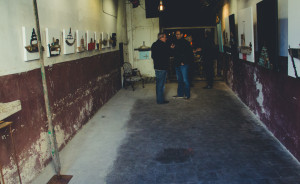
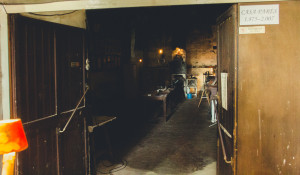
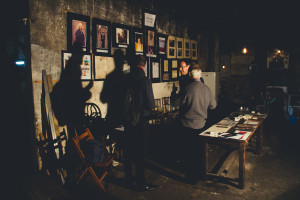
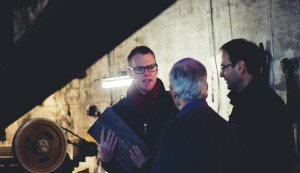
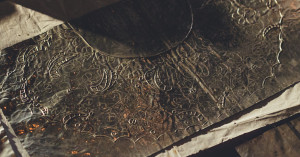
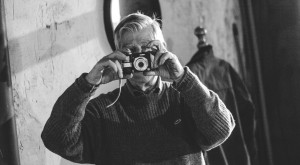
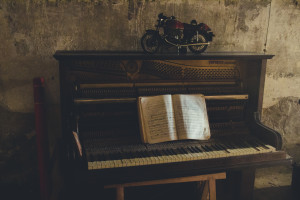
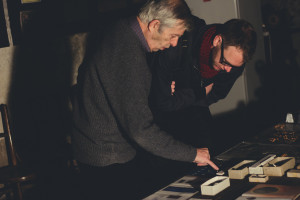
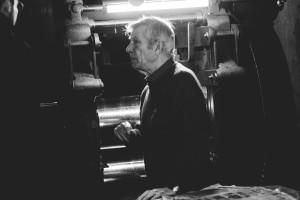
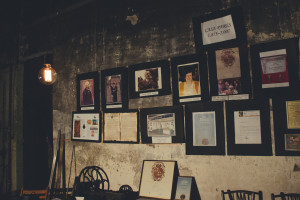
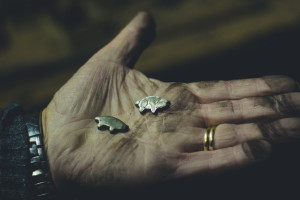
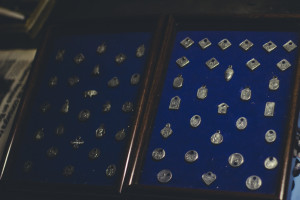

Woooow!!!!!